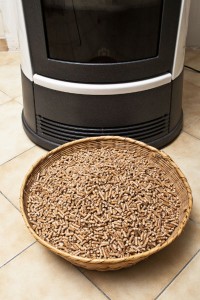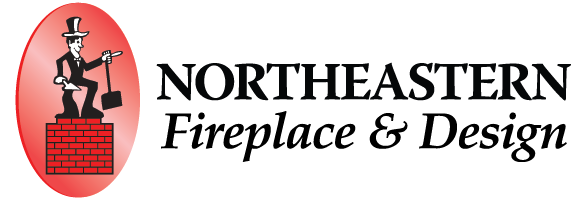
Many homeowners look for the best heating system that is both economical and eco-friendly. A pellet stove is just the thing they’re looking for.
You may have heard a lot lately about pellet stoves as they have become a top choice in heating systems for homes over the past few years. The first pellet stove came on the market in 1930, and since then pellet stoves have gone through many changes, going from a large, boxy, workhorse design to a smaller decorative heating appliance to be used in residential homes. Since the heating industry has moved towards heating systems based on efficient combustible and renewable resources in the past 10 years, pellet stoves have seen a great resurgence, and Northeastern Fireplace & Design has been asked many questions about these stoves. We would like to share the most frequently asked questions and their answers, as cited in the article How Wood Pellet Stoves Work, to give you a better understanding of pellet stoves.
What is a pellet stove and what are the pellets?
Convenient, cost-effective, and environmentally friendly, a pellet stove is a sophisticated electronic appliance that gives you an economic and eco-friendly heating option for your house. Pellet stoves are fueled by wood pellets made from recycled sawdust and wood shavings, the things that have been swept up off the floors of sawmills. Cheap and easy to manufacture, wood pellets are compact, resembling rabbit food, and environmentally friendly because they have a very low pollution rate.
Are there different types of pellet stoves?
Yes, there are two different types: free-standing and insert stoves. You can get an insert if you have an existing fireplace, and one of our expert technicians at Northeastern Fireplace & Design will install it into the firebox and vent it through your chimney. If you do not have a fireplace, you can go with a free-standing stove with its own exhaust pipe.
Do pellet stoves come in different styles and options?
Available in all sorts of sizes, shapes, styles and colors, you are sure to find the perfect pellet stove for your home, no matter your taste. As for options, you can go with the standard model or with the super deluxe version with a programmable, controlled feeder and a remote control thermostat. Our staff at Northeastern Fireplace & Design would love to show you our wide variety of pellet stoves available. Other options include the hopper location, heat output levels, and manual or automatic ignition.
What are the benefits versus the disadvantages of pellet stoves?
The benefits far outweigh the disadvantages. Pellet stoves are easy to operate, convenient, environmentally friendly, and safer, as they give off less smoke and creosote. In addition,
the fuel—the pellets—offers additional benefits, as it is inexpensive, easy to store, and also eco-friendly. The biggest disadvantage of a pellet stove is that it runs on electricity, so if your power goes out in a storm or for another reason, you will have no heat, unless you have a back-up generator. Another disadvantage is it may be difficult to find pellets in your area, or the store may not carry a sufficient inventory for you to keep up your supply.
If you have other questions about pellet stoves, contact Northeastern Fireplace & Design today. Our knowledgeable staff will be more than happy to answer your questions.
